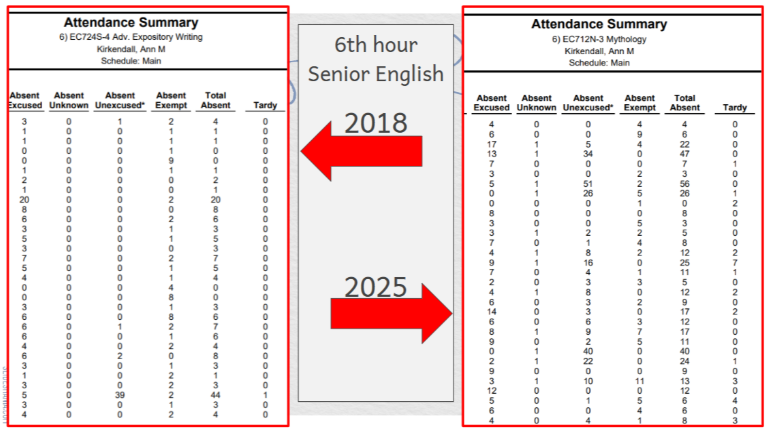Skiers are increasingly frustrated by inconsistent snowfall
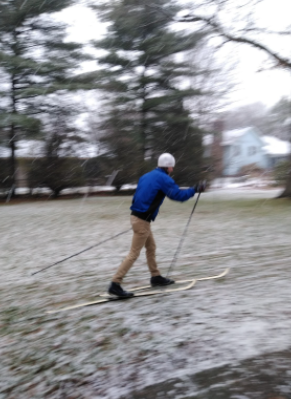
For dedicated cross country skiers, sometimes there is more grass than snow on their favorite tracks.
March 10, 2022
Snow covers the pine trees. The trails are groomed with perfect corduroy. The sun shines. A campfire crackles, producing a smoky aroma. It’s a perfect day to cross country ski. In the past, this could be any day in the winter, but now these days are rare.
Climate change is making winters shorter and milder, which is affecting the ski industry. Storms still occasionally rage, but weather patterns are changing. We are losing winter, and with winter, we are losing sports like Nordic skiing.
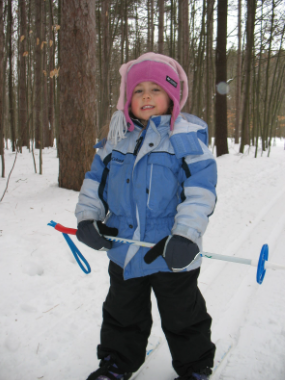
My whole life I have loved winter; my parents raised me to enjoy it. I was lucky enough to learn to ski before I was two years old. My parents bundled me up for the cold to ski, sometimes on my own skis, sometimes in my parents’ backpack. I couldn’t wait for snow every fall. I have been competing ever since I learned to skate ski in fourth grade. When I was in elementary school, my family cross-country skied every weekend. I remember skiing, then enjoying delicious hot cocoa and sledding. With the way my family immersed me in winter, I had no choice but to love it. Now, winters are getting shorter, limiting these experiences.
To me, the weather forecast looks dismal: 45 degrees and rain. The snow is going to melt. “We had been having such a good winter,” I think to myself, “after this warm day, we’ll be back to hoping for snow again.” I’m thankful for the snow we’ve had, but I’m disappointed it’s already melting. In the winter of 2020, I skied less than 10 times. In 2021, the winter was a month; in 2022, the winter was about a month and a half. These winters are much shorter than in the past.
In Frederic, Michigan, at Forbush Corner, a nordic ski center, winters are noticeably shorter as well. “The beginning of the [ski] season was typically the middle of November and went well into the first week of April,” Ann Wagar of Forbush Corner said, “The last eight years we might get some snow in November, but it would melt and not return until the end of December.” Warmer weather causes snow to fall later and melt earlier.
Science corroborates anecdotal evidence of shorter winters. According to the EPA, the Great Lakes region has been receiving snow over a shorter period during winter, due to increased temperatures. This shortens the time to participate in winter sports.
Warm weather that decreases the length of the ski season is one challenge; another is more frequent warm days during winter months. These temperature swings occur “because of the big dips in the jet stream,” Wagar said, “These dips also created extremes of the polar vortex and prolonged periods of rain coming up from the Gulf of Mexico.” Michigan might seem unaffected by extreme weather caused by climate change in other areas, but weather patterns in Michigan are affected by conditions thousands of miles away. These conditions make trail maintenance very difficult.
Temperature swings damage snow conditions. Thaw cycles create dangerous, icy conditions that are not fun or safe for skiing. This is one difficulty skiers face as a result of decreased snowfall and frequent warm-ups. “While we still get adequate snow throughout the winter to have our ski trails open most days, we do get more days above 32 degrees now than we did when I was growing up, which – in the ski industry – is a challenge,” Mariah Frye, owner of Cross-Country Ski Headquarters in Higgins Lake, Michigan, said, “‘Warm’ days like that create thaw, and when the thawed snow refreezes, we get ice.” A noticeable increase in warm temperatures can be explained by climate change, which is affecting the ski industry. An increased incidence of higher temperatures makes keeping trails open and safe more challenging.
It takes about 4-10 in. of snow to groom trails. According to Best Places, Holland gets 79 inches of snow each year, which should be sufficient to maintain ski trails. Skiing in northern Michigan should be easier than in Holland because Best Places reports Traverse City’s annual snowfall to be 118 inches. However, when the snow melts multiple times, trails must accumulate 4-10 inches of snow multiple times.
The amount of snow received may be decreasing. “In the last 20 years the annual snowfall has dropped from 150 inches to 140, with 20-21 being the lowest snowfall ever with only 70 inches,” said Wagar. The snowfall in 2020-21 was drastically less snow than in the past. This is very noticeable to skiers. The overall amount of precipitation might remain the same, but snow falls as rain instead.
It’s frustrating when there’s not enough snow to ski. Others might be overjoyed about the convenience of a light winter. In those years, I miss gliding along the trails, challenging myself to ski faster in races, and exploring nature. According to ClimateNexus, only 68% of adults in Michigan believe in climate change. However, according to the EPA, Michigan has warmed 2-3 degrees over the last century, which contributes to shortening winters. The rise in temperatures proves the occurrence of climate change. A few degrees is enough for rain to fall instead of snow.
Maybe the 32% of Michiganders who don’t believe in global warming don’t realize the changes in weather because they don’t have a way to see the change by experiencing the shorter winters. When there is snow on the ground, a few degrees doesn’t seem noticeable, but it’s noticeable to winter sports enthusiasts. Without skiing, I probably wouldn’t notice changing weather patterns. I wouldn’t count how many days I skied or notice snow conditions. Since I ski, I experience the decreasing length of a viable ski season. Appreciating winter is key to understanding climate change.
Traveling to races in Northern Michigan and skiing in West Michigan gives me a broader view of weather patterns in the state. Trails that didn’t struggle with snow have to be resilient with less snowfall and warmer temperatures. West Michigan was lucky to get snow in January, but some locations in Northern lower Michigan faced more struggles.
The Meijer State Games Hanson Hills Classic was scheduled to take place on February 20 in Grayling at Hanson Hills; however, directors moved the race to Forbush Corner because of poor snow conditions at Hanson Hills. Insufficient snowfall and melting snow led to dirty snow and dangerous conditions. Forbush Corner received more natural snow than Hanson Hills, despite the trails being located miles apart.
Additionally, race organizers from the White Pine Stampede, point-to-point ski race from Mancelona to Bellaire, updated their trail report in mid-January saying, “our snow levels are not were[sic] they usually are at this time of the year.” The race started in 1975, so race organizers have a clear view of typical snow conditions. Race organizers created a ski course out of minimal snow, but the snow was still thin and dirty on race day.
Huron Meadows Metropark in Brighton hosts a weekend of races in early January. Due to the lack of snow, the races are confined to a small loop with man-made snow. In years temperatures rise above freezing, race organizers put in hours patching the course with snow, drilling holes in the icy base to drain water, and doing other interventions to create a skiable course.
Race organizers face more challenges when planning races. These are just a few examples of ski trails receiving less snow less frequently; many other ski trails in Michigan report similar conditions of thin, dirty snow for races and recreational skiing. Skiers notice poor conditions.
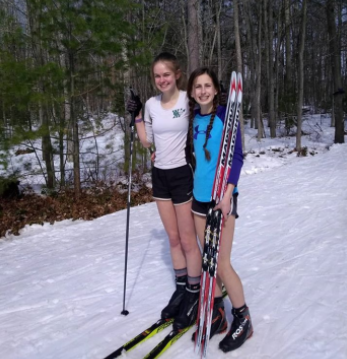
Given the poor snow conditions, cross-country ski trails must adapt, especially to less snowfall early and late in the season. Interventions to fortify natural snow are now necessary. With the lack of natural snow, Nordic ski trails can adopt snowmaking procedures. Frye said, “We’ve invested not only in snowmaking but in other heavy-duty equipment to till up ice created by this more frequent thawing, so that we can present a safe ski surface.” However, making snow for Nordic trails is difficult. Nordic trails are longer than downhill runs, requiring more snow. Some Nordic ski areas have snow-making capabilities in Michigan.
At Cross-Country Ski Headquarters in Higgins Lake, they use a snow gun to make a pile of snow, then spread it on the trails to patch bare spots. Natural snow covers the trails, but man-made snow is used as backup when conditions deteriorate, extending the ski season. Cross-Country Ski Headquarters is no stranger to making snow to maintain trails. “We bought our snow gun in 1999, after then-owner Bob Frye finally got fed up with watching the snow melt during these more frequent warmups,” Frye said. The snow gun wouldn’t have been necessary if climate change wasn’t affecting the trails. Natural snow still provides skiers a good ski surface, but warm ups that make trails impassible are frustrating. However, the adaptations that Cross-Country Ski Headquarters has made reinforce natural snow on the trails.
Cross-Country Ski Headquarters is willing to take on the challenge of maintaining superb trails for skiers as long as possible each winter. “While trail maintenance has become more labor intensive with the change in the climate, we still have very solid winters with many days of great skiing on the Headquarters trails. There is no doubt, though, that man-made snow noticeably extends our season,” Frye said. Climate change provides difficult circumstances for skiing early and late in the season, but adaptations continue to provide quality ski experiences. Man-made snow is necessary to extend ski seasons. Noticeable changes in the climate affect how ski resorts function.
At Huron Meadows Metropark in Brighton, they make a pile of snow and spread it around a 2k loop using a similar system as Cross Country Ski Headquarters. However, most of the winter, it’s only possible to ski on the snowmaking loop because Eastern Michigan doesn’t receive enough natural snow to maintain ski trails using natural snow.
Forbush Corner in Frederic has 2k of snowmaking. Similar to a downhill resort, Forbush Corner has snow guns lining the trail. Forbush Corner is the only location in the state that has a snowmaking loop with snow guns around the trail, pioneering snowmaking procedures for nordic skiing. “The snowmaking system went in during the 2019 offseason to provide a reliable early season base to ski on until the natural snow arrived,” said Wagar. The snow guns allow the whole loop to be covered with snow. Snowmaking wouldn’t be necessary if winters weren’t noticeably shorter.
In the absence of natural snow due to climate change, snowmaking equipment maintains the length of ski seasons. “It has proven to be very beneficial and has allowed us to be open 4-6 weeks longer than we would without it,” Wagar said. Skiers enjoy skiing early and late in the season in phenomenal conditions on the snowmaking loop.
Snowmaking systems provide reliability when weather patterns are changing. “Snowmaking has been integral to keeping our trails open and keeping people skiing; whereas before snowmaking we may have to close a trail due to bare spots and ice, now we can spread man-made snow onto those areas so that people can keep skiing,” said Frye. The ski industry must be resilient to endure the challenges they face.
My first time skate skiing this year was on the snowmaking loop at Forbush Corner. Forbush Corner was the only trail in the lower peninsula that had snow, thanks to the snowmaking equipment.
Snowmaking solutions are still susceptible to climate change. If temperatures rise, making snow is impossible. Snowmakers have a range of temperatures they can make snow. “Even with snow making it didn’t get cold enough to make snow until the beginning of December,” said Wagar. The ability to make snow affects both alpine and Nordic skiing operations.
Most downhill resorts have snowmaking. However, downhill skiers still notice the effects of climate change. Senior Kaia Denhof said, “We used to ski every Thanksgiving, but the past few years I have had to go farther up north to ski or we haven’t gone because most of the ski resorts were closed.” Warming temperatures shorten the downhill season.
Skiing circles on a 2k loop is not nearly the same as exploring an extensive network of snowy trails, but it’s better than not skiing. I’m thankful that snowmaking makes it possible to ski even when there’s limited natural snow. Skiing on man-made snow isn’t the same as skiing in natural powder for downhill skiers either; “I love when my skis get covered by inches of fresh snow,” Denhof said, “I do not like to ski on icy or man-made snow.”
Man-made snow can’t cover local, ungroomed ski trails for ski adventures. Saugatuck Dunes isn’t groomed, but I enjoy skiing there because the trails travel around large sand dunes and past Lake Michigan; the scenery is amazing. The views wouldn’t be possible without sufficient snowfall. Protecting our planet from further warming is crucial to preserve experiences on natural snow, winter sports, and their economies.
Many winter sports athletes, including Chloe Kim and Jessie Diggins, recognize the challenges of climate change have joined Protect Our Winters’ Athlete Alliance, which uses passion for the outdoors to advocate for environmental protection. Olympians can inspire us with their strength; they can also inspire us to protect the environment. These athletes have seen the changing conditions. “Mountain towns that used to thrive on ski tourism are struggling through Decembers with no natural snow…,” wrote Diggins in a blog for Protect Our Winters. Impacts of climate change go beyond a small community of skiers; they affect local businesses. Climate change shortens ski seasons; shorter winters provide shorter winter tourism seasons.
Michigan isn’t the only place that’s feeling the effects of climate change. World Cup ski venues must have snow making capabilities to host an event. More races are held on man-made snow, which has more predictable conditions, changing race dynamics, waxing, and tactics. Many races still use natural snow, but the sport is changing.
Climate change makes the World Cup and the Winter Olympics more difficult to host. Lack of snow or lack of cold temperatures limits some cities to not be able to host a winter games, even if they were capable of hosting in the past. Eventually, the Winter Olympics might exclusively use fake snow.
In the United States, Nordic skiing isn’t nearly as popular as in other countries. The US hasn’t hosted a World Cup Nordic event since 2001. However, Nordic skiing is part of Scandinavian culture. Everyone skis on the endless trails. Norway is a dominant force in Nordic skiing; they were the first country to win 50 gold medals in the Winter Olympics. The US has never won a medal in the biathlon in the Olympics. In the 2018 Olympics, Jessie Diggins and Kikkan Randall won the USA’s first gold medal in Nordic skiing. Their medal was the first of any color in Nordic skiing since Bill Koch’s 1976 silver. Jessie Diggins recently won the first two individual Olympic medals for women’s Nordic skiing in the US. Although US Nordic skiing is having more success, we still fall far below Norway’s dominance.
Participation in winter sports might be correlated to concern about climate change. According to The New York Times, out of 21 countries surveyed, the United States had the highest percentage of people who didn’t believe in climate change. Sweden had fewer people who denied climate change than the US. Participation in winter sports could be one of many factors affecting this disparity. Skiing is more popular in Sweden, so more people experience the effects of climate change.
Glancing at a per capita carbon emissions map makes it clear that the US emits more carbon than Scandinavian countries. These countries have bolder policies regarding sustainability and environmental protection. While our economies might be different, Scandinavian countries affect the climate less than the US. This could be due to the popularity of Nordic skiing, which makes people more aware of and willing to address environmental concerns.
When I skied at Valley Spur in Munising, MI, I was reminded of the beauty of winter. Feet of snow covered the trees, transforming them into garden gnomes. The trails wind up and down glacial valleys, giving skiers amazing views. Valley Spur was amazing to explore. Without winter, these moments could be lost: opportunities to explore, connect with companions, and admire nature. Making snow for these trails with the same beauty wouldn’t be possible.
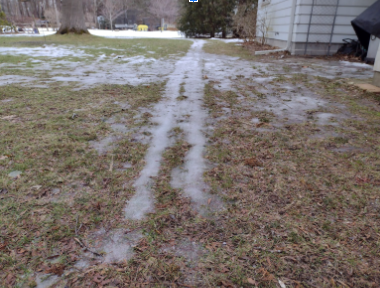
Many people enjoy shorter winters in favor of nice weather; however, Holland should get snow. If there’s snow, it might as well be used. Winter might have unpleasant weather, but participating in a winter sport makes winter more enjoyable. Going outside and getting physical activity is important any time of the year, but even more important in the winter. Adventuring outside allows one to appreciate the beauty of winter. Spending time outside with friends and family is even more meaningful. Enjoying a winter sport provides a new perspective on seemingly adverse conditions. Appreciating winter gives it more value, and can inspire a newfound desire to protect winter. Doing activities that require snow can help reveal the difficulties climate change has given us.
Climate change has made skiing more complicated. If we fail to halt rising temperatures, climate change could make skiing even more challenging. Of all consequences of climate change, challenges in participating in winter sports aren’t the most serious, but they will persist. Realization of minor hardships affecting winter activities can bring awareness to the most severe consequences of a warming planet.

